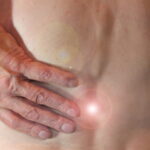You or a loved one has been diagnosed with Parkinson’s Disease and you’re collecting as much information and data as you can get your hands on, so you know what to expect. There’s a lot of information and none of it is easy to digest. On the bright side of things, you’re not alone on this difficult journey. Because Parkinson’s is turning into a worldwide pandemic, there are a lot of scientists and researchers involved in the search for a cure. Meanwhile, there is a wealth of drugs to alleviate symptoms and help slow the progression.
Let’s take a look at what this disease is about.

What Causes Parkinson’s?
Nerve cell damage in the brain causes the levels of a chemical messenger called dopamine to drop. When an individual’s amount of dopamine is compromised, abnormal brain activity occurs. Although the root cause of the nerve cell damage is still unknown, researchers have found factors that correlate:
- Genetic mutations, which are generally rare unless many family members have Parkinson’s disease.
- Environmental triggers are perhaps one of the biggest factors that are controllable. Researchers have confirmed that exposure to toxins, especially herbicides and pesticides may increase the risk of Parkinson’s disease.
- In general, young people do not experience Parkinson’s. Around age 60 is when people tend to feel clear symptoms.
- Although heredity plays a factor, the risk is generally small unless there are many family members who experience Parkinson’s.
- Clusters of substances within the brain cells called Lewy bodies are identified markers of the disease. Although we still have a lot of research to do on Lewy bodies, it’s been confirmed that the presence of these form and increase when Parkinson’s disease is occurring in the body. Alpha-synuclein, a natural protein found within the Lewy bodies, may offer a clue for researchers.
- Men are more likely to develop Parkinson’s disease than women.

What You Need to Know About Parkinson’s Symptoms
Once diagnosed, individuals experience progression at different rates.
Many times, Parkinson’s will start with a tremor in just one hand. Specifically, one may rub the thumb and forefinger back-and-forth, or the hand may tremor even at rest. An individual may also experience slow movement (bradykinesia), muscle stiffness, and imbalance. Some experience shorter steps when walking or they drag their feet.
In the early stages, people may experience loss of facial expressions, like blinking or smiling. They can also experience a decrease in arm-swinging when walking, and soft or slurred speech. When they do speak, their voices may sound monotonous. Some individuals also have trouble writing.
These symptoms gradually increase and worsen as the disease progresses.
As Parkinson’s Progresses
The following symptoms appear in the middle to late stages; although coping becomes more difficult, the symptoms are treatable with medication:
- Dementia or cognitive problems often occur in the later stages. Thinking difficulties are harder to treat with medications because the response to medication is not powerful.
- Many individuals experience depression and other emotions, like fear and anxiety, even in the early days. The good news is that this is treatable with depression medication and alleviates the emotional cost of the disease.
- Some people experience difficulty swallowing and saliva can accumulate in the mouth. This causes drooling. Chewing also becomes difficult due to muscle loss in the mouth. problems.
- Sleeping problems can occur. This includes waking up throughout the night or falling asleep in the middle of the day.
- Incontinence, or the inability to control urination, can occur. Having difficulty urinating and constipation are other symptoms that develop.
- Pain and fatigue are both common in the middle and late stages, and there is scientists have not found a pattern with when it happens, how often, or when.
- Sudden drops in blood pressure are not uncommon, and individuals may experience dizziness or lightheadedness when this happens.

How Can People Treat Parkinson’s Disease?
There is currently no cure for the disease, but there is a wide spectrum of available drugs to combat the symptoms.
Neurologists most often diagnose Parkinsons’s by medical history and symptoms. Sometimes, they’ll perform a dopamine transporter scan, which is called a DAT.
Doctors currently use Carbidopa-levodopa (Rytary and Sinemet) to diagnose Parkinson’s disease when it appears that patients feel improvement with their symptoms.
Also, aerobic exercise and physical therapy can help, while a speech-language pathologist works on speech problems.
Since dopamine cannot directly enter the brain, the following drugs can help:
- Carbidopa-levodopa, which converts to dopamine while the combination of the two lessens nausea
- Duopa, to maintain fluctuating responses to carbidopa-levodopa
- Dopamine agonists, which mimic the dopamine effects in your brain. These include (Mirapex), ropinirole (Requip), rotigotine, and Apomorphine (Apokyn)
- MAO B inhibitors, which include selegiline (Eldepryl, Zelapar), rasagiline (Azilect) and safinamide (Xadago). These inhibit the brain enzyme that breaks down dopamine
- Catechol O-methyltransferase (COMT) inhibitors such as Entacapone (Comtan), which maintain the effect of levodopa
- Anticholinergics, such as benztropine (Cogentin) or trihexyphenidyl, which control tremors
- Amantadine, given to control early-stage symptoms
Deep brain stimulation (DBS) can reduce symptoms as well. This is where a surgeon will implant electrodes into a specific part of your brain that will send electrical impulses where needed.
This method often helps with advanced stage symptoms and can also help with fluctuating responses to medications.
Ways to Prevent Parkinson’s
Although researchers need more studies, they have found a correlation between green tea and caffeine intake and lowered risk of the disease.
Also, men with lowered uric acid levels have a lower incidence of Parkinson’s.
There are many studies that have shown that people who regularly take anti-inflammatory drugs have a lowered risk, and reduced cholesterol levels and higher vitamin D intake can also help.
Strangely enough, scientists have confirmed that nicotine is associated with a lower risk of Parkinson’s.
Lastly, aerobic exercise helps with a lower risk of contracting the disease as well.
For more information on Parkinson’s disease, visit https://www.parkinson.org/understanding-parkinsons/what-is-parkinsons.







